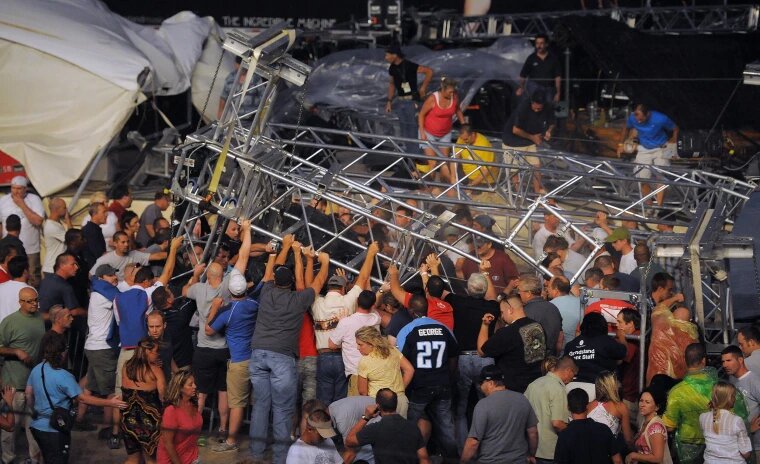
D. Boon — lead singer for the American hardcore band Minutemen — said that dying doing what really excites you isn’t even dying. We would have to find a different word to describe it. Vincent Damon Fournier — better known as Alice Cooper — is enthusiastic about faking his own death on stage, whether he’s guillotined, electrocuted, or dismembered. The 75-year-old Detroit-born rock singer has been shot by a firing squad or dropped from a scaffold, with a noose around his neck.

The papier-mâché performances have always been part of his peculiar way of conceiving rock as an electrifying and macabre circus show; an incursion into the lion’s cage, designed to provide the public with an extra dose of adrenaline. This custom — already introduced at the dawn of his career — was taken to a new level on his 1973 tour, with a “suicidal” journey in which the musician was “executed” up to 78 times, in places such as Charlotte, Philadelphia, Vancouver, or New York.
However, a decade-and-a-half later in April of 1988 his umpteenth mock hanging nearly cost him his life, in one of the most peculiar accidents in the history of live music. The Detroiter explained what happened much later, in an interview with Entertainment Weekly. The event took place at London’s Wembley Stadium, during the general rehearsal for his European tour: Raise Your Fist and Yell. Cooper, then 40, had just returned to the states after being diagnosed with cirrhosis in 1983. Upon his return, he had recorded a couple of “gloomy” heavy metal albums, shot a live concert video, The Nightmare Returns (1987), and made a brief tour of North America. Rolling Stone noted that he had returned as a “pale reflection” of what he had been in his prime, though he was still “willing to inoculate a new generation with the virus of dislocated and demented rock.”
All he needed to do was reconnect with his audience on the other side of the pond. His European fans had contributed so much to elevating him at the dawn of the glam era, when — in the United States — he was mostly seen as a grotesque clown. Cooper was convinced that the winds of fashion were blowing in his favor in the spring of 1988. After a couple of “prosaic” years in which rock seemed to have lost “the ability to dream,” the vigorous irruption into popular culture of the slasher genre — with film sagas such as Friday the 13th or A Nightmare on Elm Street — awakened the thirst for blood and truculence in a new batch of teenagers.
Cooper wanted to run to meet that new audience. Perhaps, at that point in his career — with divorces and liver problems plaguing him — he was no longer in a position to release songs as fresh and forceful as School’s Out or No More Mr. Nice Guy, masterpieces in the theater of the absurd. But he did feel qualified to offer an “energetic, controversial and scary” live show, like in the old days. In this context, returning to his traditional false execution on a scaffold — unseen in European venues for five years — seemed like a safe bet.
The trick in question had been one of the stellar contributions to the Billion Dollar Babies tour (1973) by magician James Randi — the man Cooper describes as “the Gandalf of rock & roll.” Born in Toronto, Randi was quite a character, an illusionist who had made a living practicing “white magic” well into the 1960s, who then recycled himself as a professional skeptic, the scourge of false gurus, healers, hypnotists and psychics, whom he ridiculed in public with his exhaustive knowledge of the crude tricks that their supposed “powers” were based on.
Leave a Reply